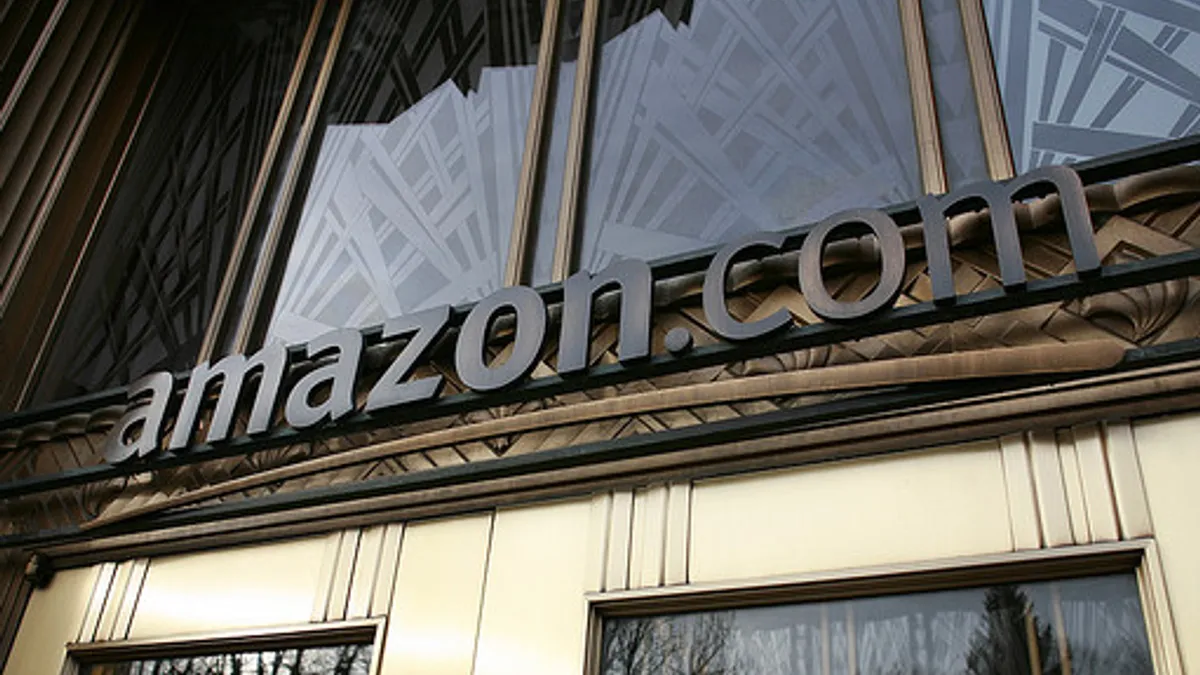Dive Brief:
-
Amazon and Walmart are each increasing their share of traffic coming to online shopping websites. Amazon's website has gobbled up 30.7% of traffic over the past year (up from 29.6%) and Walmart has taken 5.9% (up from 5.3%), according to a study of 100 shopping sites by digital market intelligence firm SimilarWeb.
-
SimilarWeb found that Amazon generated more than five times the traffic as Walmart.com. Further, Amazon's was of higher quality, with visits averaging over 2.5 minutes longer and taking in five more pages per visit. The differences were especially pronounced on desktops — where most e-commerce still takes place — with Amazon taking 48% of the share to Walmart's 28%.
-
Walmart also lags in referral-driven traffic, with just 9% compared to 20% at Amazon, according to SimilarWeb. Of the total volume of referrals flowing to the two retail giants, 95% goes to Amazon.com, according to the report. And Walmart is slipping here, with the top two referring sites to Walmart.com in the past 12 months decreasing the traffic they sent.
Dive Insight:
Walmart overshadows Amazon as a retailer in many if not most respects, except when it comes to Amazon's turf of online performance. But Walmart, through a series of acquisitions and improvements to its digital operations, has begun to turn that around.
Walmart's online rise has the two locked in battle on several fronts, most notably on price. Deal-hunting is a major driver of online sales, and Amazon remains a price leader in several categories. Its prices average 10% less than all other retailers, according to recent research from e-commerce analytics firm Profitero. But Walmart is getting aggressive with price matching, offering identical prices to Amazon on more than half (53%) of all products — compared to 37% matched by Target and 35% by Jet, Profitero found.
But Walmart can't depend on its low-price tenacity alone to drive traffic to its site. In a blog post, SimilarWeb Content Marketing Manager Daniel Sevitt said that the firm derived its insights from each site's traffic performance in terms of volumes and links, both incoming and outgoing. He warned that, when it comes to referrals, Walmart is actually slipping as Amazon eats up incoming traffic.
"This level of dominance may be unsurprising given the highly evolved nature and near-universal uptake of Amazon's affiliate program, Amazon Associates," he wrote. "But even when looking at sites where Walmart.com does well on referrals, their share of referrals traffic is decreasing."
Nintendo.com, for example, sent 44.5% of its referral traffic to Walmart's website in April 2017, but by March this year that fell to 28.6%. It was a similar story at Slickdeals.net, which sent 17.2% of its traffic to Walmart in April 2017 but less than 1% last month.
Walmart is making some moves that make it more attractive to a slice of consumers. There's no need to pay a membership fee to get free-two day shipping, for example, Sevitt said. But it hasn't been very effective in driving people to its site, where they could discover those perks. "In building out its affiliate program, Amazon ensures that it offers appropriate rewards to referring sites that send traffic that converts into sales," he said.













